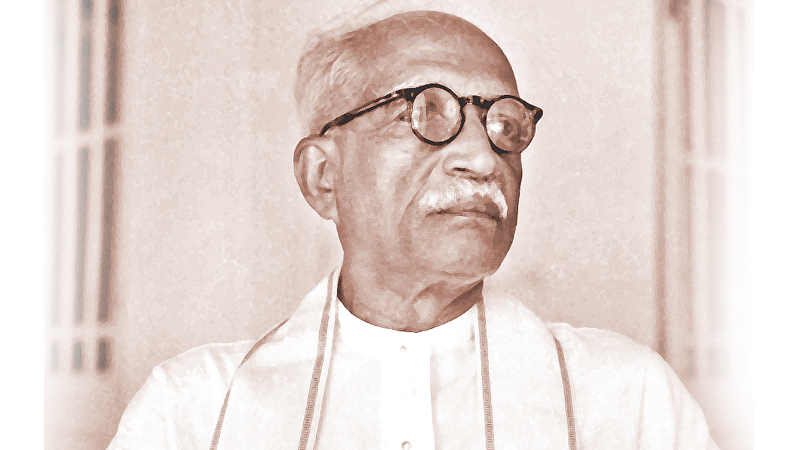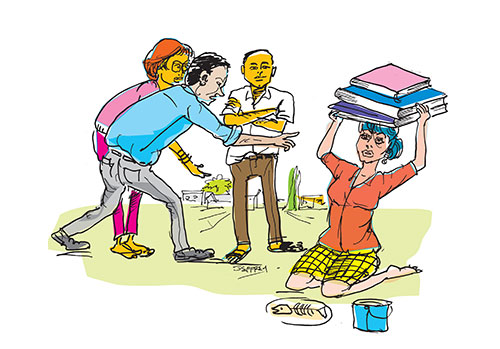By Sudesh Mantillake
The Ministry of Education (MoE), the National Science Foundation (NSF), and the National Institute of Education (NIE) jointly organised an event on 31 March 2023 at Royal College, Colombo. At the event, the Minister of Education, Dr. Susil Premajayantha, announced that the government was planning to transform the country’s education system starting 2024 by introducing “STEAM” (Science, Technology, Engineering, Arts, and Mathematics) education. STEAM is distinct from “STEM” (Science, Technology, Engineering, and Mathematics), which was promoted earlier by the government, with the NSF as the designated national focal point. These sudden shifts in education policy raise serious questions about the future of education in the country. Were they adopted after due consideration and consultation? Will STEAM continue to draw on the utilitarian framework of STEM? Will the STEM/STEAM fab represent a form of McEducation based on business models, furthering corporate interests? And, most importantly, will STEAM education address the burning issues in our education system?
STEM vs STEAM
STEM was popularised in the US at the turn of the millennium, initially by the Tapping America’s Potential (TAP) coalition business roundtable. TAP is a group of corporate leaders who claimed that to maintain America’s competitiveness in the twenty-first century, the country had to cultivate scientists and engineers to create tomorrow’s innovations. Later in 2007, the US National Research Council promoted scientific and technical innovations in its research agenda. As both the government and corporate sectors supported STEM, more funding became available for STEM, with a parallel decrease in funding for arts and arts education, creating an imbalance.
In this context, the American Academy of Arts and Sciences, through their Commission on the Humanities and Social Sciences, published a report titled The Heart of the Matter in 2013, making a case for humanities and social science education. The Report argued that societal goals could not be achieved by science alone, a matter I dealt with in an earlier Kuppi column (The Island, 15th February 2022). Since 2013, it has been widely accepted by independent scholars and research groups, including scientists and engineers, in the United States and elsewhere, that integrating “Arts” into STEM education is essential. As a result, STEAM education replaced STEM, although it has evidently been recognised only very recently in Sri Lanka.
McEducation
The Minister of Education has proposed an instant package to transform our education system. Like McDonald’s fast food, the new STEM/STEAM initiative, is expected to give quick results, that is better products (students), representing a form of McEducation: a fast/instant approach to education and development based on the corporate logic of education. The government simply added “A” for arts and presented STEAM, with no discussion of how STEAM will improve STEM or whether the latter had given the anticipated results. It is like preparing your burger without cheese, and adding a slice of cheese later, and calling it a cheeseburger.
Whether STEM or STEAM, both systems promote a narrow, instrumental way of treating education that is driven by corporate interests. At the meeting on March 31st, the Minister of Education said, “The professions we are targeting today will not be there in the next 10-15 years. The new professions will replace them. When we act today, we should keep that [transformation] in mind.” As with STEM, his speech suggests that STEAM education will be developed targeting the future job market. Under this same market logic, arts faculties have been criticised for some time for not providing the “soft” skills that are needed by the “world of work.”
At the global level, countries have switched to STEAM education acknowledging that: 1) Art and creativity are needed for innovation; and 2) Art is essential to develop a critical, creative, and empathetic citizen. Some countries (e.g., China) use STEAM mainly for the first purpose, while some European countries place emphasis on the second. From the Minister’s speech, it seems like Sri Lanka is moving to STEAM for the first reason, i.e., to use art for innovations.
STEM/STEAM will not solve our problems
In Sri Lanka, we have many deep-rooted issues in education that cookie-cutter approaches, like STEM/STEAM, simply cannot solve. These issues—often based on resource constraints due to lacking public investment in education—are partially responsible for the strikes and protests organised by school teachers, university teachers, and university students. Based on the Minister’s speech in which he condemned student protests, the government seems to believe that STEM/STEAM education will discipline and pacify students: “Our students who are supposed to study in the universities, who should be learning the universal knowledge, have set aside that purpose and are getting hit by tear gas by the police on the roads. Our education has come to this place. This needs to be changed.” The Minister sees student protest as an issue that only lies with students, but does not address the complex reasons for the student protests. Among their demands, they are also asking for a better future. And they are critical of the existing system. It is very unlikely that this new STEM/STEAM-based education system will reduce student protests.
Any education policy or proposal cannot ignore the socio-economic-cultural differences among the various Sri Lankan communities. In relation to education, they differ based on: rural versus urban; whether they are under privileged, like Upcountry Tamils; the medium of instruction (Sinhala, Tamil, and English); the availability of competent teachers in rural districts; levels of parental support, in turn, shaped by their socioeconomic conditions; and the physical and psychological status of students due to malnutrition or other social problems. We cannot use urban schools in Colombo as the standard. The STEM/STEAM approach assumes that all schools have the resources to teach science-based subjects. How many rural schools have the capacity to teach science? What about Upcountry students who are often forced to study arts for their Advanced Level because their schools do not provide the resources for them to learn science? Is the government ready to increase the % GDP spent on education and distribute the resources in a socially just manner? Are our universities ready for interdisciplinary education that integrates the arts and sciences? Forget about interfaculty hiring; we sometimes cannot recruit an applicant with a Ph.D. in comparative literature into the Department of Fine Arts because the higher authorities decide literature is not fine arts.
Even if we succeed in STEAM education, do we have industries to support innovation? When our students have demonstrated innovation in the past, they have not been supported by the state to take their innovations off the ground. How will the situation change in the next few years? The Minister’s proposal to discourage competition among students through STEAM is noteworthy, although it is unclear how this will be accomplished.
The lack of opportunities itself creates competition. How do we create more opportunities for our younger generation? These questions are yet to be answered.
A truly interdisciplinary approach
An interdisciplinary approach that integrates the arts and the sciences may be a way forward. Art should not be treated as an instrument to teach science, technology, engineering, or mathematics. As some educationists show, the role of arts within STEAM has been instrumentalised by, for example, the use of music to memorize facts in science. If we follow this path with our STEAM education, music may soon be used to teach mathematical formulae. I agree that this approach could be fun for children and may help students to retain information, but this approach trivializes the arts. The purpose of arts education should not be limited to assisting STEM education. Students should learn dance for reasons such as understanding the strengths and limitations of their bodies, understanding their feelings, and expressing their emotions. Therefore, instead of using arts as a tool to teach STEM, we should create a truly interdisciplinary setting for the sciences to engage with the arts and the arts to engage with the sciences, on equal terms.
Underneath the STEM fab, there is a misconception that science tells the ultimate truth and can be applied to any location. In education, we are dealing with the minds of unique children. The division of Social and Transcultural Psychiatry at McGill University have challenged some of the misconceptions about science by adopting a critical approach to the neurosciences. The Director of the division, Professor Laurence J. Kirmayer, shows how science and knowledge are situational and socioculturally shaped. Through their critical studies on neuroscience, they emphasize the importance of genuine interdisciplinary convergence between the sciences and arts (humanities and social sciences), which could be taken as the true spirit of wisdom for our future.



